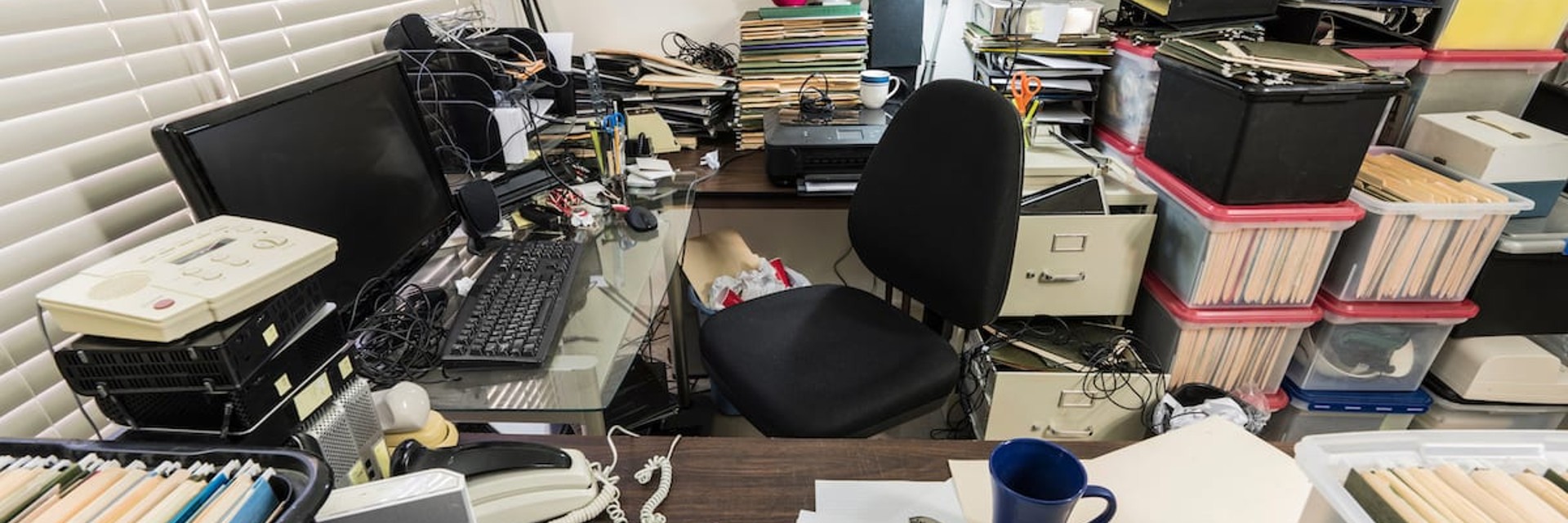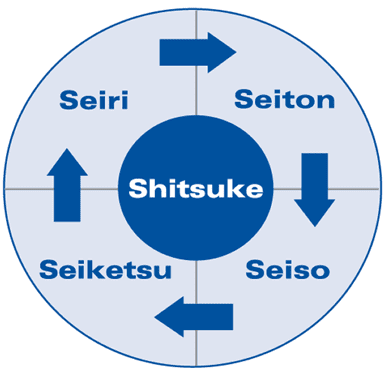Sparring about your Lean issue?
Call René
5S is one of the most important Lean tools. What exactly is 5S and how is it deployed in organizations? And what does it actually deliver!
According to the Lean Lexicon, the 5Ss are "five related terms, beginning with an S, that describe workplace practices conducive to visual control and Lean production."
In Japanese, these five words are:
In Dutch, these five concepts mean Separate, Arrange, Clean, Standardize, Stand. (Some add a sixth S for Safety.)
Interestingly, Toyota traditionally refers to only four Ss because the idea of shitsuke has been made redundant by the company's system of daily, weekly and monthly audits to check standardized work.
The Lexicon also reminds us, "Whether four, five or six Ss are used, the key point to remember is that the effort is systematic and organic for lean production, not a 'bolt-on' stand-alone program."

Applying 5S is often the first step in a Lean transformation. That's because the idea behind it is easy to understand and its application produces immediately visible results. By helping people transform the way they think and enabling them to organize their workplace (and thus their work) differently, 5S can be a powerful catalyst in a Lean journey.
Norman Faull of Lean Institute Africa, reporting from a Lean conference in Tunisia, recently told how 5S has been used by many companies on the continent to introduce a kaizen culture. A powerful reminder of the importance of sticking to the basics.
A great example of how 5S can be used to make that first push toward a Lean transformation comes from this Italian hospital, where nurses initiated change in one department by applying the 5S technique to the warehouses, nursing station and medical trolleys. Read about their work with 5S and the results it produced here.
Lean farmer Ben Hartman also began his Lean journey on his farm in Indiana by applying 5S. Ben turned his overflowing warehouse into a handful of tools that he can now load into the back of his truck. In this interview, he explains how he did it.
Just because 5S is a good first step in your journey doesn't mean it's an easy step or that you can just forget about it after the initial implementation. Like everything else in lean, it is difficult to sustain your 5S efforts. In an important Yokoten column, Jim Womack writes, "Suppose an organization implements 5S for the right reasons and in the right ways to improve work. It seems like this should be easy once the work is correctly specified. Just sort, straighten, shine, standardize and keep the process up! But persistence is actually very difficult. In my experience, as an unintentional industrial and organizational archaeologist, I have often seen the remnants of 5S implementations (e.g., the worn blue tape around the empty space where tools or supplies should be and probably once were). [...] In practice, I find that 5S has a different curve, with the benefits often disappearing in two short half-lives, one a steep drop and the second a plunge." Check out the column for some great tips on how to make sure our 5S practices hold up.
The importance of 5S in a Lean transformation cannot be overemphasized. In this fascinating article, Michael Ballé goes so far as to name the lack of 5S efforts as one of the deadly sins that impede our ability to Kaizen on the gemba. In this article, Michael writes, "The purpose of 5S is for people to learn, through regular practice of the five S's, to create a work environment in which standardized work is easy to follow. [...] Without 5S, Kaizen is unlikely to get off the ground because people will not try to appropriate or improve their workplace."
It is interesting to note how, as for other Lean tools, 5S is more important for the underlying principles it embodies than for the practice of keeping the workplace clean and tidy that it teaches us. In this sense, 5S facilitates standardization and allows people to take ownership of the solution to workplace problems.
Thinking that 5S consists only of clearing and organizing a few shelves is very limiting. Also, don't make the mistake of going overboard with 5S - for example, by putting tape around everything in an office (from chairs to water dispensers).
In this article about a gemba walk at Tokheim Italia, Michael Ballé gives us another important reminder: Lean tools often mean different things to different people, and 5S is no exception. Therefore, it is essential that the application of 5S truly benefits the operator. Michael writes, "So how does 5S work for the technicians? In the maintenance center, 5S is about helping operators stock their vans with as little waste and frustration as possible."
The benefits of 5S are diverse, but they are not always obvious (Lean is a holistic system, and its positive effects are usually felt throughout the enterprise): Tokheim itself, for example, teaches us how applying 5S had a positive effect on the company's environmental performance. Director Mauro Cartello says, "Waste generates waste. The better we become at eliminating waste and identifying things of real value, the smaller our impact on nature and the use of natural resources, and the greater our business success." Read the article to learn more about 5S supporting Tokheim's green performance.

Sign up for our newsletter